Aberrant epithelial-mesenchymal Hedgehog signaling characterizes Barrett's metaplasia
- PMID: 20138038
- PMCID: PMC3422577
- DOI: 10.1053/j.gastro.2010.01.048
Aberrant epithelial-mesenchymal Hedgehog signaling characterizes Barrett's metaplasia
Abstract
Background & aims: The molecular mechanism underlying epithelial metaplasia in Barrett's esophagus remains unknown. Recognizing that Hedgehog signaling is required for early esophageal development, we sought to determine if the Hedgehog pathway is reactivated in Barrett's esophagus, and if genes downstream of the pathway could promote columnar differentiation of esophageal epithelium.
Methods: Immunohistochemistry, immunofluorescence, and quantitative real-time polymerase chain reaction were used to analyze clinical specimens, human esophageal cell lines, and mouse esophagi. Human esophageal squamous epithelial (HET-1A) and adenocarcinoma (OE33) cells were subjected to acid treatment and used in transfection experiments. Swiss Webster mice were used in a surgical model of bile reflux injury. An in vivo transplant culture system was created using esophageal epithelium from Sonic hedgehog transgenic mice.
Results: Marked up-regulation of Hedgehog ligand expression, which can be induced by acid or bile exposure, occurs frequently in Barrett's epithelium and is associated with stromal expression of the Hedgehog target genes PTCH1 and BMP4. BMP4 signaling induces expression of SOX9, an intestinal crypt transcription factor, which is highly expressed in Barrett's epithelium. We further show that expression of Deleted in Malignant Brain Tumors 1, the human homologue of the columnar cell factor Hensin, occurs in Barrett's epithelium and is induced by SOX9. Finally, transgenic expression of Sonic hedgehog in mouse esophageal epithelium induces expression of stromal Bmp4, epithelial Sox9, and columnar cytokeratins.
Conclusions: Epithelial Hedgehog ligand expression may contribute to the initiation of Barrett's esophagus through induction of stromal BMP4, which triggers reprogramming of esophageal epithelium in favor of a columnar phenotype.
Copyright 2010 AGA Institute. Published by Elsevier Inc. All rights reserved.
Figures

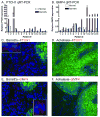
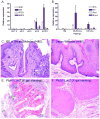
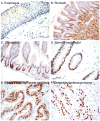

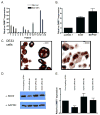
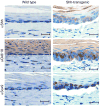

Similar articles
-
Sox9 drives columnar differentiation of esophageal squamous epithelium: a possible role in the pathogenesis of Barrett's esophagus.Am J Physiol Gastrointest Liver Physiol. 2012 Dec 15;303(12):G1335-46. doi: 10.1152/ajpgi.00291.2012. Epub 2012 Oct 11. Am J Physiol Gastrointest Liver Physiol. 2012. PMID: 23064761
-
Hedgehog signaling regulates FOXA2 in esophageal embryogenesis and Barrett's metaplasia.J Clin Invest. 2014 Sep;124(9):3767-80. doi: 10.1172/JCI66603. Epub 2014 Aug 1. J Clin Invest. 2014. PMID: 25083987 Free PMC article.
-
Notch signaling pathway and Cdx2 expression in the development of Barrett's esophagus.Lab Invest. 2012 Jun;92(6):896-909. doi: 10.1038/labinvest.2012.56. Epub 2012 Mar 26. Lab Invest. 2012. PMID: 22449796
-
Reflux esophagitis and its role in the pathogenesis of Barrett's metaplasia.J Gastroenterol. 2017 Jul;52(7):767-776. doi: 10.1007/s00535-017-1342-1. Epub 2017 Apr 27. J Gastroenterol. 2017. PMID: 28451845 Free PMC article. Review.
-
From Reflux Esophagitis to Esophageal Adenocarcinoma.Dig Dis. 2016;34(5):483-90. doi: 10.1159/000445225. Epub 2016 Jun 22. Dig Dis. 2016. PMID: 27331918 Free PMC article. Review.
Cited by
-
Animal Models of Barrett's Esophagus and Esophageal Adenocarcinoma-Past, Present, and Future.Clin Transl Sci. 2015 Dec;8(6):841-7. doi: 10.1111/cts.12304. Epub 2015 Jul 27. Clin Transl Sci. 2015. PMID: 26211420 Free PMC article. Review.
-
BMP-driven NRF2 activation in esophageal basal cell differentiation and eosinophilic esophagitis.J Clin Invest. 2015 Apr;125(4):1557-68. doi: 10.1172/JCI78850. Epub 2015 Mar 16. J Clin Invest. 2015. PMID: 25774506 Free PMC article.
-
Ectopic overexpression of Sonic Hedgehog (Shh) induces stromal expansion and metaplasia in the adult murine pancreas.Neoplasia. 2011 Oct;13(10):923-30. doi: 10.1593/neo.11088. Neoplasia. 2011. PMID: 22028618 Free PMC article.
-
Porcine Esophageal Submucosal Gland Culture Model Shows Capacity for Proliferation and Differentiation.Cell Mol Gastroenterol Hepatol. 2017 Aug 4;4(3):385-404. doi: 10.1016/j.jcmgh.2017.07.005. eCollection 2017 Nov. Cell Mol Gastroenterol Hepatol. 2017. PMID: 28936470 Free PMC article.
-
Impact of TRP Channels on Extracellular Matrix Remodeling: Focus on TRPV4 and Collagen.Int J Mol Sci. 2024 Mar 22;25(7):3566. doi: 10.3390/ijms25073566. Int J Mol Sci. 2024. PMID: 38612378 Free PMC article. Review.
References
-
- DeMeester SR. Adenocarcinoma of the esophagus and cardia: a review of the disease and its treatment. Ann Surg Oncol. 2006;13:12–30. - PubMed
-
- Paulson TG, Reid BJ. Focus on Barrett's esophagus and esophageal adenocarcinoma. Cancer Cell. 2004;6:11–6. - PubMed
-
- Spechler SJ. Clinical practice. Barrett's Esophagus. N Engl J Med. 2002;346:836–42. - PubMed
-
- Jankowski JA, Harrison RF, Perry I, et al. Barrett's metaplasia. Lancet. 2000;356:2079–85. - PubMed
Publication types
MeSH terms
Substances
Grants and funding
LinkOut - more resources
Full Text Sources
Other Literature Sources
Medical
Research Materials

